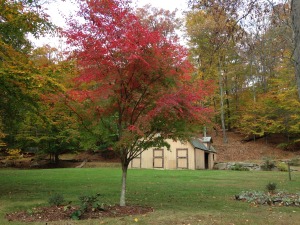Hello, fellow readers,
I’ll bet Bridget of Forks Township is not the only one who wants to know what influences the glorious colors of fall. We all know it has to do with cooler temperatures and shorter days, but why do some trees turn red while others stay orange and yellow?
During the growing season, leaves produce chlorophyll, which uses the sun’s energy to combine carbon dioxide and water to make food for the tree. This process is called photosynthesis. While there are multiple forms of chlorophyll, most reflect green light; hence, why most leaves are green.
As the growing season ends, shortened daylight and cooler air signal the tree to hunker down for winter. The tree cuts off the leaves’ link to water and minerals, and they begin to die as chlorophyll production ends. Then, the sunlight breaks down the chlorophyll in the leaves, which uncovers the carotenoid pigments (yellow, orange, or red) previously masked by green. By the way, the foliage of some tree species turns brown and never shows bright colors.
The remaining chlorophyll produces an abundance of sugar, which is not used up by the tree. Red pigments, called anthocyanin, are created through this excess sugar and intense sunlight. These pigments primarily serve as a sunscreen to protect the leaves from too much high-intensity light. That’s why leaves in direct sun may turn red, while those on the shady side of the same tree may be yellow. Sunny days and cool nights provide the best weather for anthocyanin production, and this year, the drought impacted the metabolism of plants, which added to the red pigments.
The most vivid colors emerge after a warm, dry summer (we’ve sure had that) and early autumn rains, which prevent premature leaf fall. Our dryness caused some leaves to drop early, but we’ve enjoyed sunny days and frostless nights, making for a colorful trifecta.
It didn’t occur to me until Bridget asked the question there is a sequence of colors that shows up in the fall. First, yellow, followed by orange and ending with red leaves. It’s during the mid-fall season, when all the colors overlap, that we enjoy the peak color performance. What a show! Garden dilemmas? AskMaryStone@gmail.com and your favorite Podcast App.
There’s more to the story in the Garden Dilemmas Podcast:
Enjoy the related story Fall Needle Drop of Renewal



